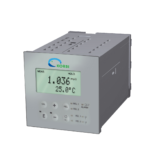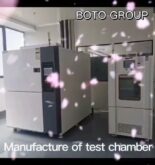Corporate Carbon Footprint – Understanding Scope 1, 2 and 3 Greenhouse Gas (GHG) Emissions
Chúng tôi chuyên cung cấp các sản phẩm, phụ kiện vật tư tiêu hao cho hoạt động các thiết bị được giới thiệu trong Video dưới đây.
Vui lòng liên hệ Vinacode team để được tư vấn chi tiết.
Khách hàng ở Việt Nam vui lòng liên hệ để mua hàng.
Web: www.vinacode.com.vn | Mail: info@vinacode.com.vn
Điện thoại: 02873000375
What’s included a company’s carbon footprint? How to measure corporate Greenhouse Gas (GHG) emissions? Every business leader should know what to consider as part of their company footprint, this video explains what’s included.
Often we tend to think about facilities, energy use, and perhaps the fleet – but these account only for a part of a company’s total carbon footprint. The Sustainability Speaker Susanna Hasenoehrl helps you to better understand this, walking you through the concept of Scope 1, 2 and 3 emissions.
Scope 1 and 2 emissions arise from a company’s operational activities, such as a production facility, or heating or cooling an office. These can be controlled somewhat easily – for example, by switching to renewable energy, or to an electric fleet.
So what about Scope 3? Pukka, a Unilever brand, reports that 49% of their emissions come from boiling the kettle, to make a ‘cuppa’. This is an example of Scope 3 emissions, which are more indirect – yet related to the usage of a company’s products and services.
For most companies, Scope 3 makes up most of their carbon footprint. Scope 3 emissions can be quite difficult to measure, as it includes things like emissions from waste – when a product is disposed of – the supply chain, outsourced activities, and even business travel.
Nonetheless: when you come across a company’s carbon disclosure, do ask whether Scope 1, 2 and 3 emissions are included.
Lưu ý: Vinacode chuyên thiết bị môi trường, xử lý nước, xử lý rác thải và thiết bị phòng Lab



